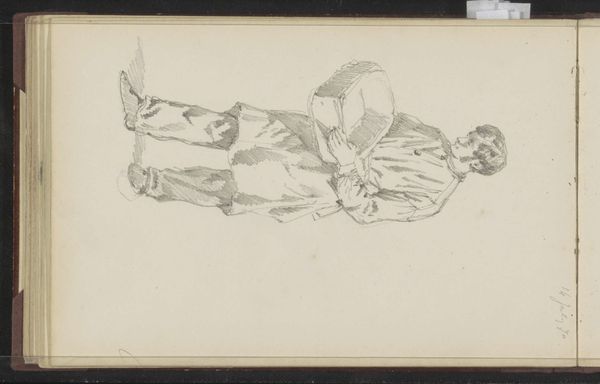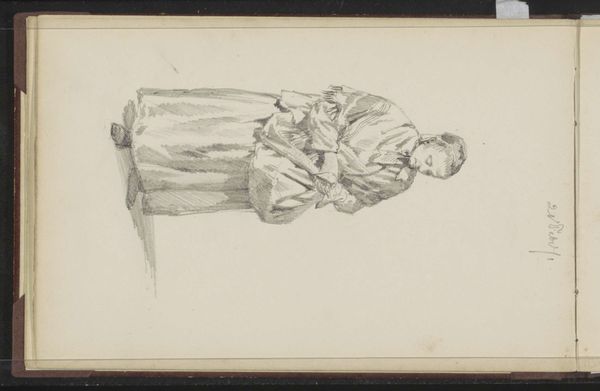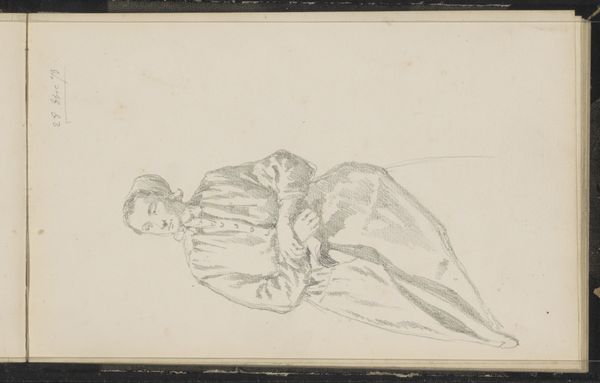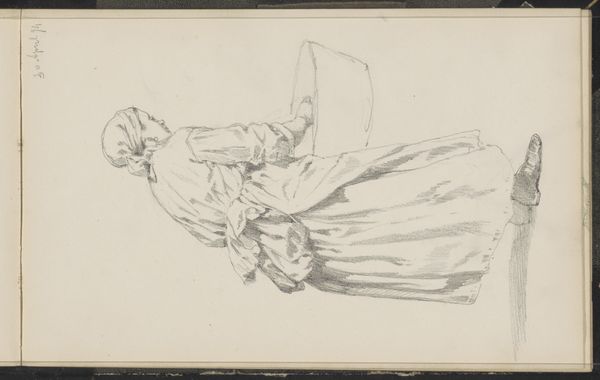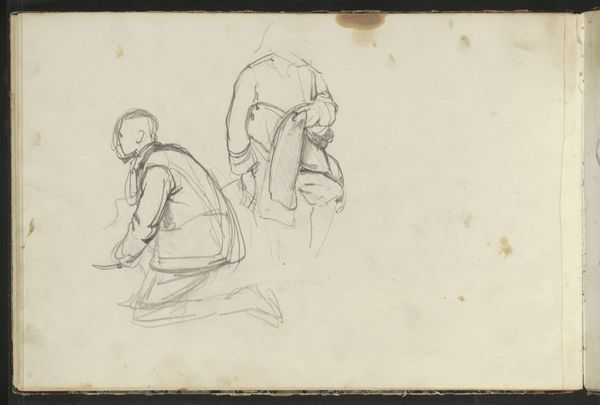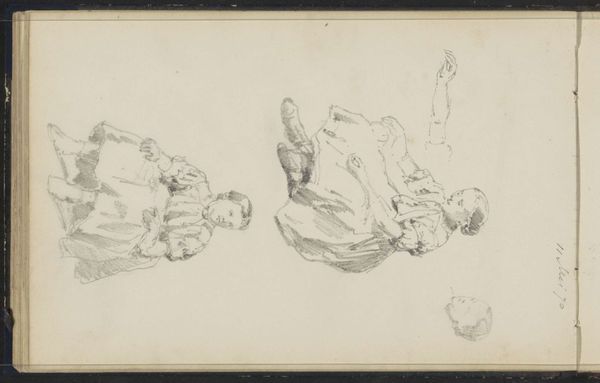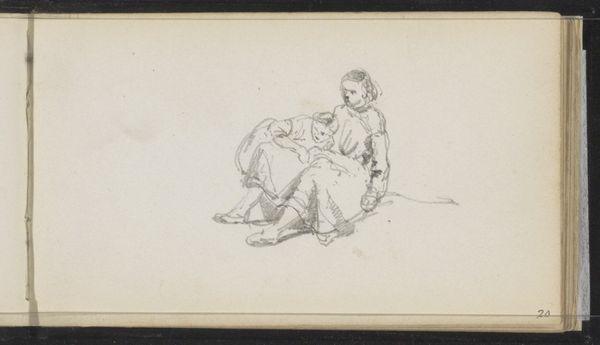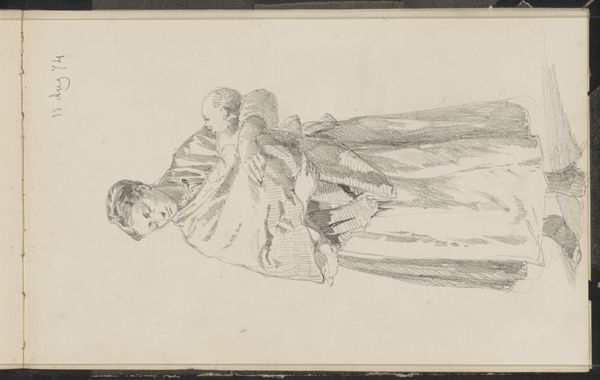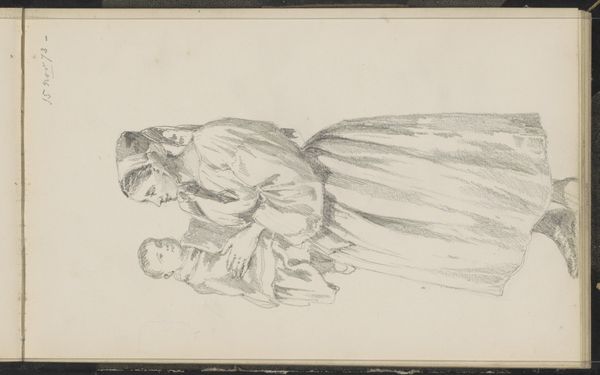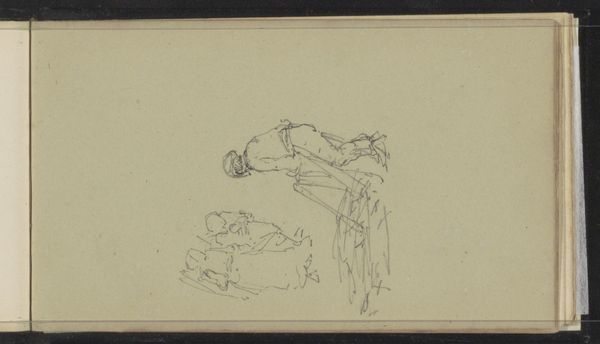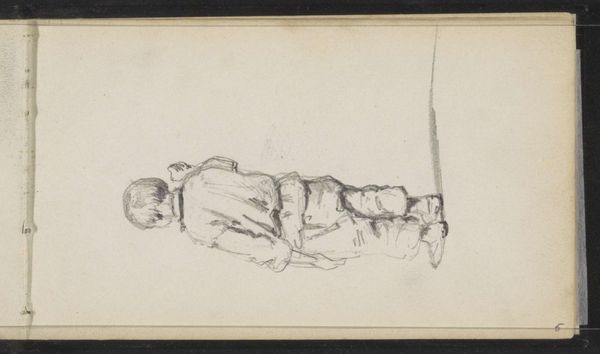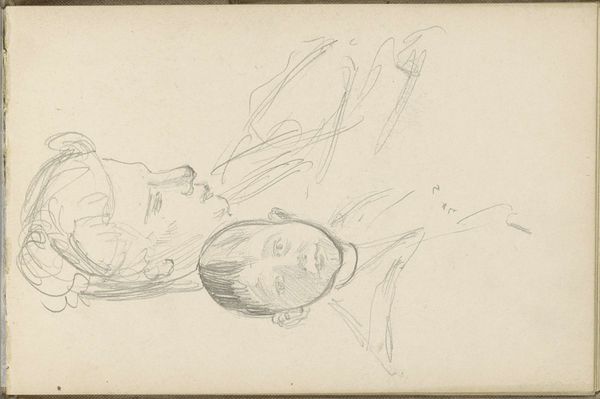
Moeder die de koorden van de jurk van haar dochter strikt 1854 - 1914
0:00
0:00
albertneuhuys
Rijksmuseum
drawing, pencil
#
portrait
#
drawing
#
toned paper
#
light pencil work
#
pen sketch
#
pencil sketch
#
sketch book
#
personal sketchbook
#
ink drawing experimentation
#
sketch
#
pen-ink sketch
#
pencil
#
sketchbook drawing
#
genre-painting
#
sketchbook art
#
realism
Copyright: Rijks Museum: Open Domain
Curator: Welcome. Here we have Albert Neuhuys’s “Moeder die de koorden van de jurk van haar dochter strikt,” which translates to “Mother Tying the Cords of Her Daughter's Dress.” Created sometime between 1854 and 1914, it’s a genre scene rendered in pencil on toned paper. Editor: It strikes me as incredibly intimate, even vulnerable. The loose pencil work, the focus on this quiet, domestic act... there’s a sense of tenderness that resonates immediately. Curator: Precisely. The sketch's composition, even in its simplicity, draws the eye directly to the figures. Neuhuys uses the light pencil work to emphasize the forms and the subtle tonal variations to create depth and volume. Note the economy of line—how little he needs to convey the relationship between mother and daughter. Editor: And isn’t that relationship rife with complexities? The daughter, literally bound by the mother's hand— a metaphor for the constraints placed upon women, particularly in the context of 19th-century expectations and gender roles? The drawing hints at the unseen forces shaping their lives. Curator: An intriguing point, viewing the act of dressing as a form of social binding. But, I also see it as a celebration of the everyday—an unidealized portrayal of domestic life, where the beauty lies in the subtle interactions and the unspoken connection between individuals. Observe how the lines suggest a certain warmth despite their stark simplicity. Editor: Warmth yes, but the setting seems rather barren—look at the negative space. That sparseness lends itself to a feeling of constriction—both physically and psychologically. How do we unpack this tension in relation to women's lived experience? The image makes us reflect on issues like labor, familial dependency, and the ways women are perceived and represented in art history. Curator: I see that; there are multiple semiotic readings to the work here. From a purely formal point, notice the textural variety created with varied line weights. Editor: It certainly showcases the power of realism to capture not just physical appearances, but also social realities. It encourages us to look beyond the surface and delve into the stories embedded within the image, and this makes me more hopeful about current portraiture. Curator: It reminds us that careful study can always give us a deep read. Editor: Indeed, it’s a valuable image when considered through many social lenses.
Comments
No comments
Be the first to comment and join the conversation on the ultimate creative platform.
